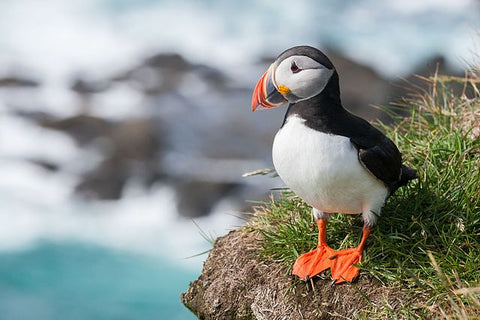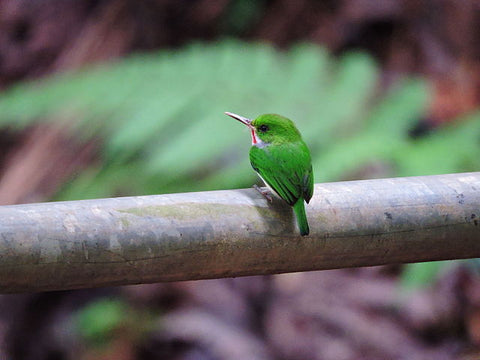By Bird Watcher’s Digest Staff
From Maine to California, Washington to the Florida Keys, the United States offers amazing birding opportunities and innumerable birding hotspots. In the sections below, you will find this vast country divided into six regions: Northeast, Southeast, Midwest and Great Plains, Northwest, and Southwest, plus Alaska, Hawaii, and the US territories—but each one represents a lot of territory to cover. Whether you are planning a vacation, a staycation, or any kind of birding trip, use Bird Watcher’s Digest’s Birding by Region to find state birding guides to locate hotspots and see more birds. There’s also a section for international birding destinations.
Northwest
Tall trees, crisp air, snow-capped mountains—few places in the Lower 48 States conjure such images of wilderness as the Northwest. Here you can find birds more common in Canada and Alaska, such as gray jay and chestnut-backed chickadee. A pelagic trip out of Washington or Oregon could turn up fork-tailed storm-petrel, common murre, pigeon guillemot, murrelets, and auklets. The Northwest is your best bet for goshawks and great grey owls—even in summer. Birds that breed here also include rufous and Calliope hummingbirds, red-breasted sapsucker, merlin, American dipper, and McGillivray’s and Townsend’s warblers. This region is your best bet for several woodpecker species, too, including white-headed, American three-toed, and black-backed. If you want to see gray-crowned or black rosy finches, head northwest. Find guides for each Northwestern state here.
|
|
Midwest and Great Plains
From the Great Plains to the Great Lakes, the birding in the center of North America is sensational all year long. Think great grey owls in Minnesota in winter, Kirtland’s warblers in the spring in Michigan, and cerulean warblers in the Ohio River Valley in summer. Don’t forget the uncountable sandhill cranes of Nebraska’s Platte River in spring. This is where you’ll hear tslick before you see a Henslow’s sparrow, and chase a Nelson’s sparrow through the prairies and potholes of North Dakota. This region is your best bet for yellow rail, greater prairie chicken, gray partridge, and migrating buff-breasted sandpiper. Consider that both the Central and the Mississippi Flyways pass through this region, and imagine the birds that use those corridors during spring and fall migration. Find guides for each state in the Midwest and Great Plains here.
|
|
Southwest
From snow-capped mountains of Colorado to the lowest elevation on the continent in Death Valley, from redwood trees near the Pacific coast to saguaro cactus and dry gulches, from the prairies of Oklahoma to the mesas and canyons of the Four Corners, the Southwest is arguably the most topographically and ecologically diverse region of North America. It is home to many endemic birds: California condor, brown-capped and black rosy-finches, yellow-billed magpie and Gunnison sage grouse, to name a few. Consider the tropical species that venture across the Rio Grande, and the hummingbird diversity of southeastern Arizona. Find guides for each Southwestern state here.
|
|
Northeast
Cool summers, colorful autumns, ephemeral spring wildflowers, Appalachian Mountains, and the heart of eastern deciduous hardwood forests. New England is a picturesque hotspot for warbler watching, and the only place in the US to find nesting Atlantic puffins is coastal Maine. New England is your best bet for great cormorant, great black-backed gull, and Bicknell’s thrush. Boreal chickadee is a good bet in the far northeast. Gulls and shorebirds are abundant along the Atlantic coast and also on the southern shores of Lakes Ontario and Erie. Find guides for each Northeastern state here.
Southeast
The list of avian specialties of the southeastern states is long: anhinga, wood stork, glossy ibis, snail and scissor-tailed kites, limpkin, black skimmer, chuck-will’s-widow, red-headed and red-cockaded woodpeckers, fish crow, and Swainson’s warbler—to name just a few. Bayous, white-powdery sand beaches of the Gulf Coast, mangrove thickets, ’gator-infested swamps, Spanish moss, estuaries and bays—the Southeast is endlessly diverse. Clouds of millions of shorebirds on DelMarVa Peninsula (the spit of land between the Delaware and Chesapeake bays that includes parts of Delaware, Maryland, and Virginia) are a spectacle worthy of any bird watcher’s bucket list. Find guides for each Southeastern state here.
Alaska, Hawaii, and US Territories
The United States isn’t just from sea to shining sea. Alaska is separated from the Lower 48 by a foreign country; Hawaii is in the middle of the Pacific Ocean; and the Commonwealth of Puerto Rico, home to 3.5 million US citizens—not to mention 17 endemic bird species—is an island in the Caribbean Sea. There are 15 other US territories, of which 11 have no human residents but plenty of birds. Alaska has one of the longest bird checklists of any state, and with Hawaii recently included to the American Birding Association area, offshore birding opportunities within the US are worth exploring. Find guides for Alaska, Hawaii, and some US territories here.
|
|
|

Your best shot at spotting a yellow-crowned night heron is
in the southeastern states.





